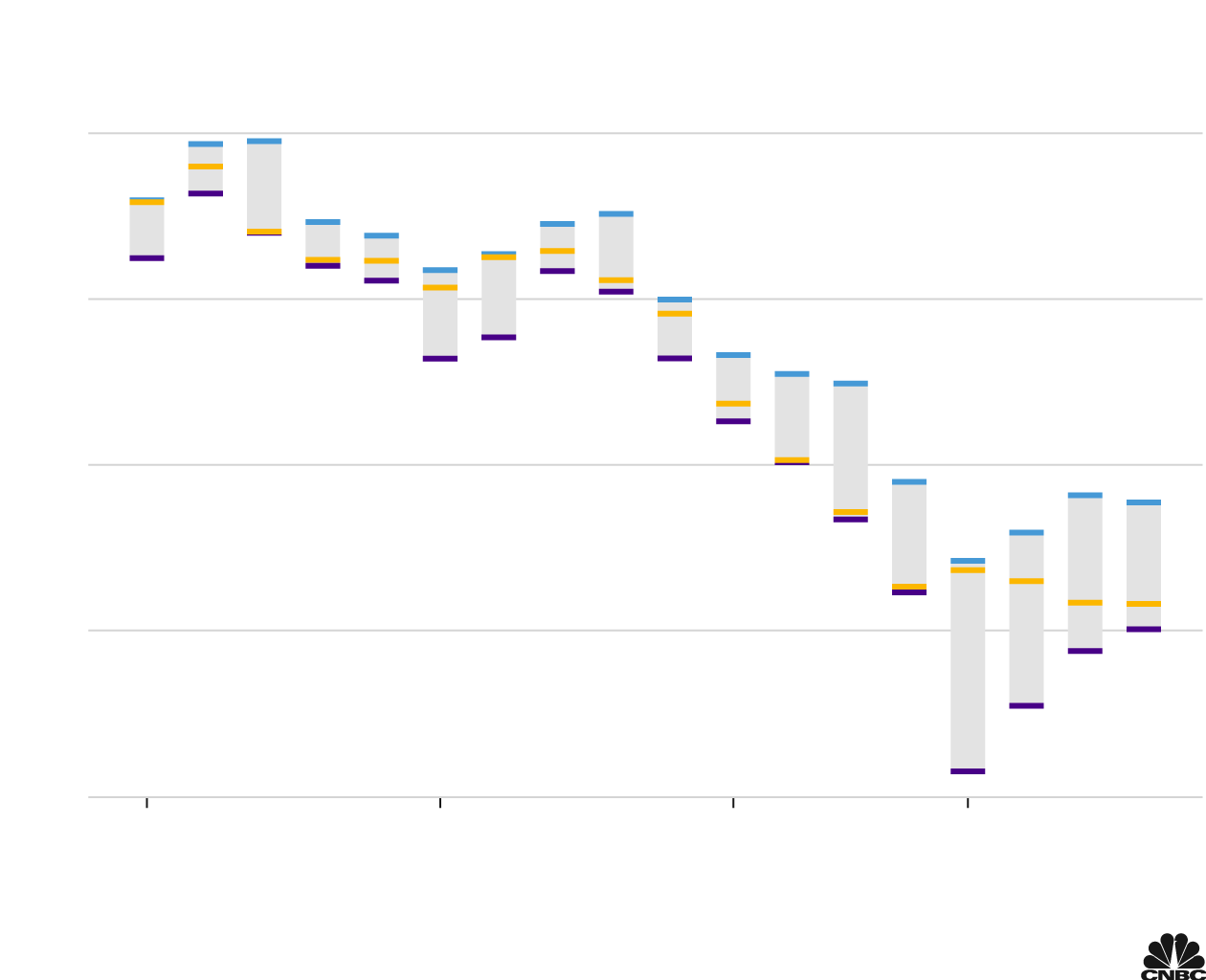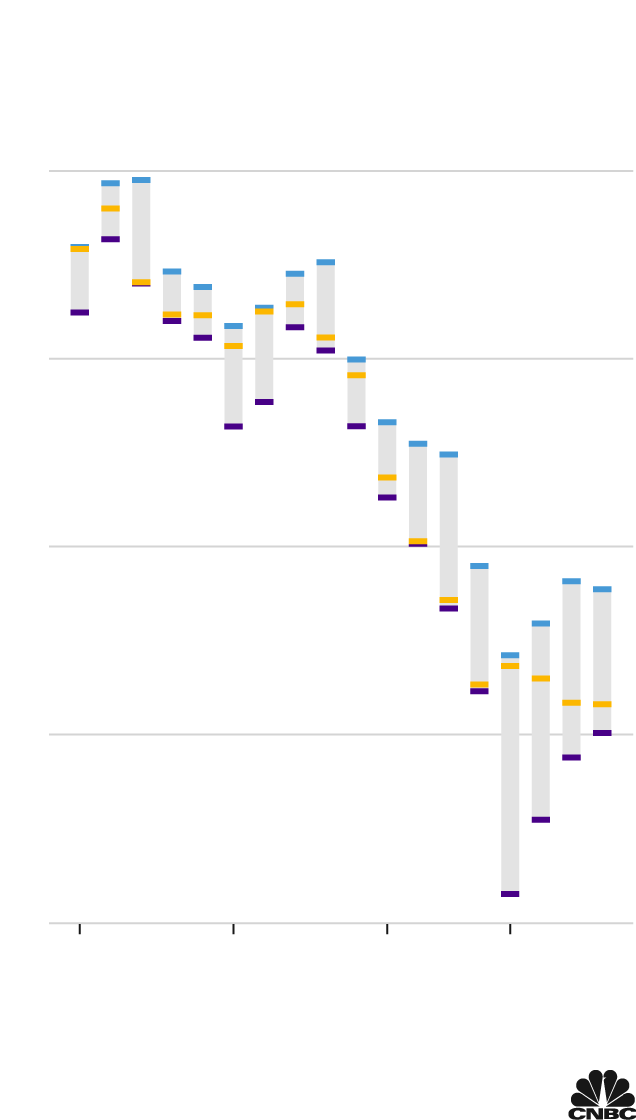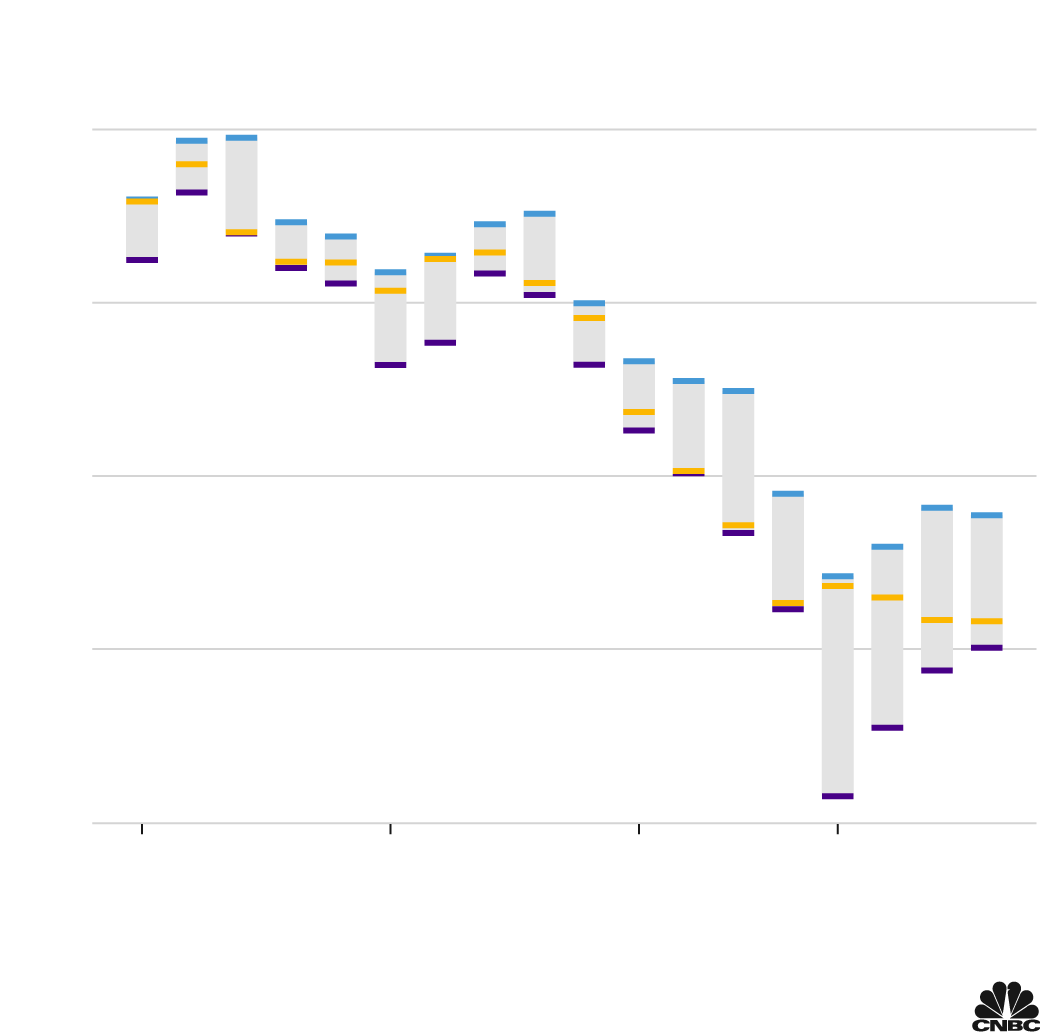S&P 500 rises Friday led by Apple, but still heads for fourth-straight down week
The market is set to wrap up a roller-coaster week with the S&P 500 headed for its worst month since March 2020.
The Dow Jones Industrial Average rose about 120 points, or 0.4%. The S&P 500 ticked up 1%. The Nasdaq Composite rose 1.6%, buoyed by Apple’s post-earnings gain.
Shares of Apple rose more than 5% after a stellar quarterly results, providing some stability to the stock averages. The company reported its largest single quarter in terms of revenue ever even amid supply challenges and the lingering effects of the pandemic. Visa also added more than 8% after a strong earnings report.
On downside, Chevron shares fell more than 4% after missing Wall Street earnings expectations. Dow component Caterpillar dipped roughly 6% even after it topped profit estimates.
The major indexes have experienced outsized swings each day this week — including the Dow making up a more than 1,000-point intraday deficit to close higher on Monday for the first time ever.
“The huge intraday movements are indicative of the challenge that the market now faces, which is that financial conditions are going to be tightening,” said Yung-Yu Ma, chief investment strategist at BMO Wealth Management. “As new information comes in, as markets overreact in one direction or another, this type of volatility and some of these swings are probably going to be with us for some time, given the nature of what the market’s trying to price in.”

The Dow’s daily swings
High, low, and closing levels for the Dow Jones Industrial Average
Chart: Nate Rattner / CNBC
Source: FactSet. As of Jan. 27, 2022.

The Dow’s daily swings
High, low, and closing levels for the Dow
Jones Industrial Average
Chart: Nate Rattner / CNBC
Source: FactSet. As of Jan. 27, 2022.

The Dow’s daily swings
High, low, and closing levels for the Dow Jones Industrial Average
Chart: Nate Rattner / CNBC
Source: FactSet. As of Jan. 27, 2022.
The Dow and S&P 500 are both headed for four consecutive losing weeks. The Nasdaq Composite has dropped 3% this week, on track for its fifth straight negative week.
“It has been a frustrating week for investors. It’s kind of this push-pull or tug-of-war between bulls and bears,” Darrell Cronk, chief investment officer for wealth and investment management at Wells Fargo, told CNBC’s “Squawk on the Street.” “The lows may not be in yet on this kind of correction.”
The S&P 500 is wading into correction territory, down more than 9% from its intraday record. The Nasdaq sits more than 16% from its high.
The Russell 2000, the small-cap benchmark, is in a bear market, finishing Thursday down 20.9% from its record close.
With January ending Monday, the tech-heavy Nasdaq is headed for its worst month since October 2008 and worst first month of the year of all time. The S&P 500 is on pace for its weakest month since March 2020 and weakest January of all time. The Dow could see its worst month since March 2020 and worst January since 2009.
Loading chart…
The market’s fear gauge, the Cboe Volatility Index, shot up to its highest level since October 2020 earlier this week and has traded above 30.
Investors on Friday continued to digest the Federal Reserve’s pivot to tighter policy.
The Federal Open Market Committee indicated Wednesday that it likely soon raise interest rates for the first time in more than three years as part of a broader tightening of historically easy monetary policy. Markets are now pricing in five quarter-percentage-point interest rate hikes in 2022, though the long-range expectation for rates is little changed.
“The FOMC meeting did not bring any surprises in terms of monetary policy, however, it may be perceived as more hawkish than expectations owing to Chair Powell’s suggestion of a need to enter a ‘steady’ phase of policy normalization,” Chris Hussey, a managing director at Goldman Sachs, said in a note.
December’s core personal consumption expenditures price index, the Fed’s preferred inflation gauge, jumped 4.9% from the year prior, the Commerce Department reported Friday. The PCE jump is higher than economists expected and the hottest reading since September 1983. Along with the inflation numbers, personal income rose 0.3% for the month, a touch lower than the 0.4% estimate.




